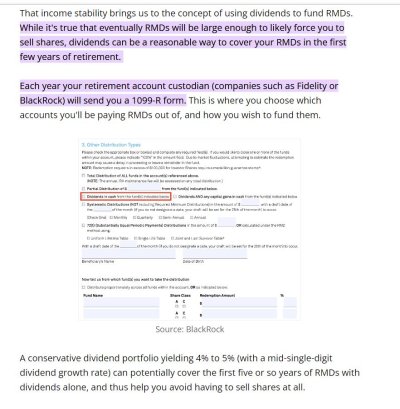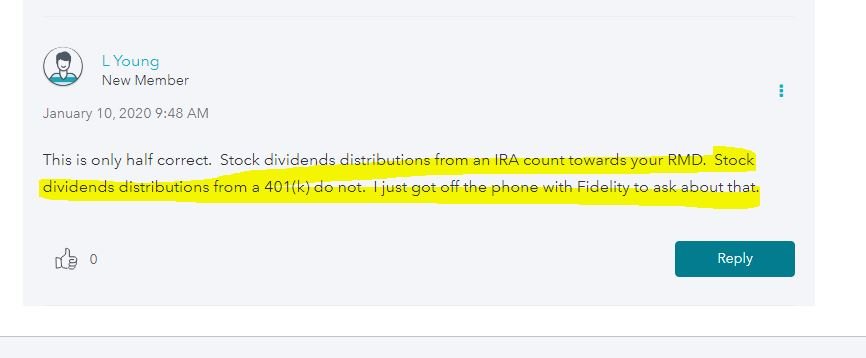As I mentioned earlier, the RMD amount will not equal the dividend until you are 90 years old. In the years from 72 to 90, the dividend will exceed the RMD amount. You will only take the RMD amount out of your tIRA, so you will have exactly the same amount of shares of MO, but you will also have cash building up in the tIRA.
For illustration. Let's say it's now December 31, 2022 and you turn 72 tomorrow. You have a tIRA with nothing but 1000 shares of MO in it. Using Friday's close, the current value of your tIRA is $45,880. The RMD life expectancy factor for age 72 is 27.4 years, so in the coming year of 2023, you must make an RMD of 3.65% of your 12/31 balance (1/27.4 = .0365) or, in this case $1674 (.0365 x 48550= 1674). But, at the current dividend rate, you will earn $3760 in MO dividends, which you will keep in cash. So you withdraw $1674 of the cash as your RMD and keep $2086 cash in your tIRA.
Now let's assume that nothing at all changes with respect to the price or dividend of MO and it is now Dec. 31, 2023. You still have 1000 shares of MO worth $48,550, plus you have $2086 cash in your tIRA for a total of $50,636. Your life expectancy factor is now 26.5 years, so your RMD percentage is 3.77%, meaning your RMD for 2024 will be $1910. Again you will earn $3760 in MO dividends from your 1000 shares. You take your RMD of $1910 from the cash. Now you have 1000 shares of MO and $3936 cash ($2086 + $3760 - $1910 = $3936)
Keep this going for the next 17 years until the end of your 90th year. You will find that you still have 1000 shares of MO and a stockpile of cash in your tIRA. At age 91, the dividends will not cover the RMD for the year, so you will start drawing your cash stockpile. I have not done all the math, but that stockpile should last maybe another 7-8 years before you have to start selling any shares of MO stock to make the RMD.
And don't forget that you are not required to spend your RMD, just pay the taxes. So you can invest the net after taxes in more MO in your taxable account if you like.
The main point is that with a high dividend payer like MO, you could go the rest of your life without needing to sell any shares, notwithstanding the RMD requirements.



